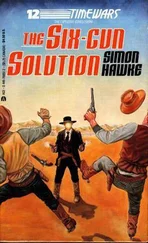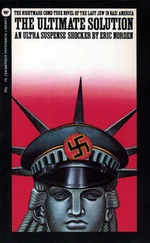I had the sense of floating through a fractal tapestry, a curving and unfolding plane of synthetic, plastic, fantastic whiteness and gleaming colors in endless vibrant hues. This extradimensional realm I had pitched into was made, I felt certain, of data, of quantum equations, visible shamanic harmonics, and the self-weaving fabric of extradimensional superconsciousness…. There was, in that place, rushing toward me, an overwhelming force of knowledge and sentience. I knew it was impossible that my mind, on any level, had created what I was seeing. This was no mental projection. This was not a structure within the brain that the drug had somehow tapped into. It was a non-human reality existing at a deeper level than the physical world. {24} 24 4. Pinchbeck, Breaking Open the Head, 240.
Clearly the chemistry of the brain is indubitably bound with consciousness. Both are mutable. Moreover, certain realms of consciousness can be generated in which, as Pinchbeck forcibly attests, a seemingly autonomous intelligence is apprehended. If ever there was a “hard” approach to spirituality, this is it.
Although the study of mystical experiences and neurochemistry might seem like compelling science, the fact of the matter is that most scientists exercise great caution when it comes to explaining, in scientific terms, something as precious and as guarded as the mystical experience. Those who tend to police communion with the divine, like religious leaders for instance, are quick to react when scientists attempt to reduce an epiphany to neurochemical events occurring in the brain. Indeed, recall the reaction to Walter Pahnke’s findings in the 1960s at Harvard. Many religious authorities felt their toes being stepped on, and Pahnke was refused further funding. Yet science, with its inevitable expanding interest in the nature of human consciousness, is surely mature enough to take on the issue, and it thus remains to be seen what science can teach us about the potentialities and extraordinary capacities of the human brain/mind.
Again, I hasten to add that science is not the only valid approach to studying altered states of consciousness. As I have repeatedly implied, direct self-experimentation according to one’s own terms and at one’s own risk is also an option. At the end of the day, data is needed. From data we can derive theories. Because all entheogenic experiences carry data, we should not be in a rush to dismiss any self-report, whether garnered from a native shaman, an official study subject, or an independent researcher.
Does the Brain Recognize DMT?
There was another finding by Strassman that proved provocative. Strassman found that the human brain does not develop tolerance to DMT. Whereas the brain normally develops tolerance to psychoactive chemicals (repeated use means you need to use more to get the same experience), Strassman found that tolerance does not develop to the repeated administration of DMT. This suggests that, in the “normal” brain, DMT has some kind of function— that is, the brain recognizes DMT and repeatedly utilizes it instead of developing a tolerance to it. So far this putative function of endogenous DMT remains unknown, but it might well be involved in the process of dreaming. This is a tenable hypothesis because we must dream every night. If we are selectively denied that part of the sleep cycle in which we dream—known as REM sleep—we will subsequently have more dreams at some later time (known as the REM-rebound effect). And so if there are indeed dream-inducing chemicals such as DMT, then the brain would by necessity have to make sure that it does not develop tolerance to them because tolerance would stop dreams from taking hold. It is also the case that both dreams and DMT-induced visions are of a somewhat similar nature. Both represent dramatic psychological scenarios that experiencers may find themselves unwittingly involved in.
Strassman also recognized a new clinical use for DMT. He was able to administer DMT every half hour to his subjects, and after each session he was able to discuss their experiences. He found that the subjects’ “psychological resistances” gradually wore down through these sessions, suggesting that DMT has therapeutic potential. Indeed, as DMT is only active for thirty minutes, it has an advantage over therapeutic drugs whose effects last much longer and that require more in the way of supervision from the therapist.
So What Does It All Mean?
Although the therapeutic application of entheogens seems apparent, it’s less clear how these substances work and how we might address the various implications of their uncanny effects. At the very least, psychedelics alter consciousness in a dramatic fashion, and at the most extreme, as we have repeatedly seen, such substances can elicit a transcendental experience in which one apparently communes with an intelligence of some kind. Unsurprisingly, there is a popular belief among many of today’s psychedelic researchers that the very origin of humankind’s religious impulse is bound with our ancestors’ discovery of entheogenic fungi, a notion that, as you may recall, was first introduced by R. Gordon Wasson. Professor David Nichols, president of the Heffter Research Institute, puts it this way:
One can imagine an early hominid accidentally ingesting a psychedelic mushroom while foraging for edible foodstuffs. Knowledge of these drugs was handed down through the generations and led to the creation of rituals around their use. We have the hymns written to Soma in the Rig Veda, or the ancient Eleusinian Mysteries of Greece, as only two examples of the extreme importance attached to these substances…. Whatever you believe in this regard, it is a simple fact that the use of psychedelic drugs can profoundly alter one’s understanding and belief about life and its meaning. Man has been on an age-old quest to find his place in the Universe, and these drugs can be important tools both in understanding this quest, and in gaining meaning about ourselves as conscious creatures. {25} 25 5. Nichols, personal e-mail communication.
Whether or not these speculations about mushrooms are correct is not the main issue. The main issue is the conceptual paradigm that sees a naturally occurring psychedelic agent of some kind lying at the heart of humanity’s sacred traditions. As it is, there is certainly some intriguing evidence that human civilization has been using psychedelic mushrooms since the earliest times. Dating from before 6000 B.C. (a long, long time before the Mexican use of psilocybin mushrooms described in chapter 2), rock paintings found at Tassili in Northern Algeria show mythical shamanlike beings covered in mushrooms. These Neolithic mushroom motifs are very distinct. Some have therefore argued that the Goddess-worshipping peoples who inhabited Tassili consumed locally gathered psilocybin mushrooms (such as the large species Stropharia cubensis ) and that this practice influenced their spiritual beliefs. Whether the inferred mushroom use at Tassili was novel or derived from an even more ancient tradition is an open question yet to be resolved.
While the debate on the prehistoric relevance of psilocybin and its effects continues, we can end this chapter with a comment by Dr. Strassman. The comment concerns the value of researching the entheogenic experience to aid our understanding of human consciousness. With regard to the mystical claims made by native peoples who employ entheogens, Strassman says:
Scientists ought to take all claims about the mind seriously. The DMT and psilocybin states… are basically non-material. They are not dependent upon the body moving through space, or interaction with other material objects. Thus, they are windows into consciousness, which, while it may have structural underpinnings, is essentially a movement of energy, rather than of matter…. So, at the very least, any claims by non-Western people about consciousness might prove very valuable… for speculation about how the mind works. In addition, these “non-literate” cultures are how we found out about DMT and psilocybin in the first place. {26} 26 6. Strassman, personal e-mail communication.
Читать дальше










